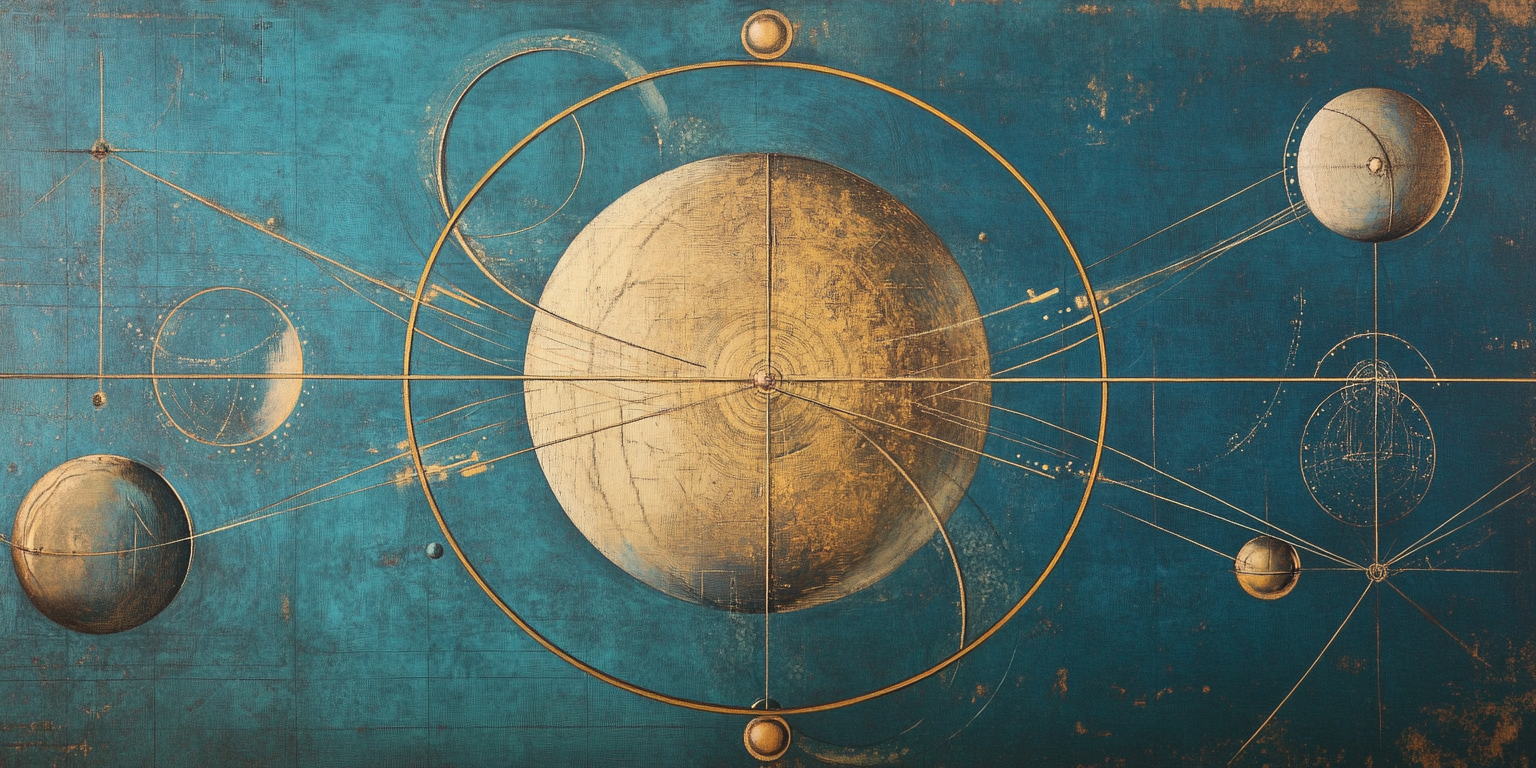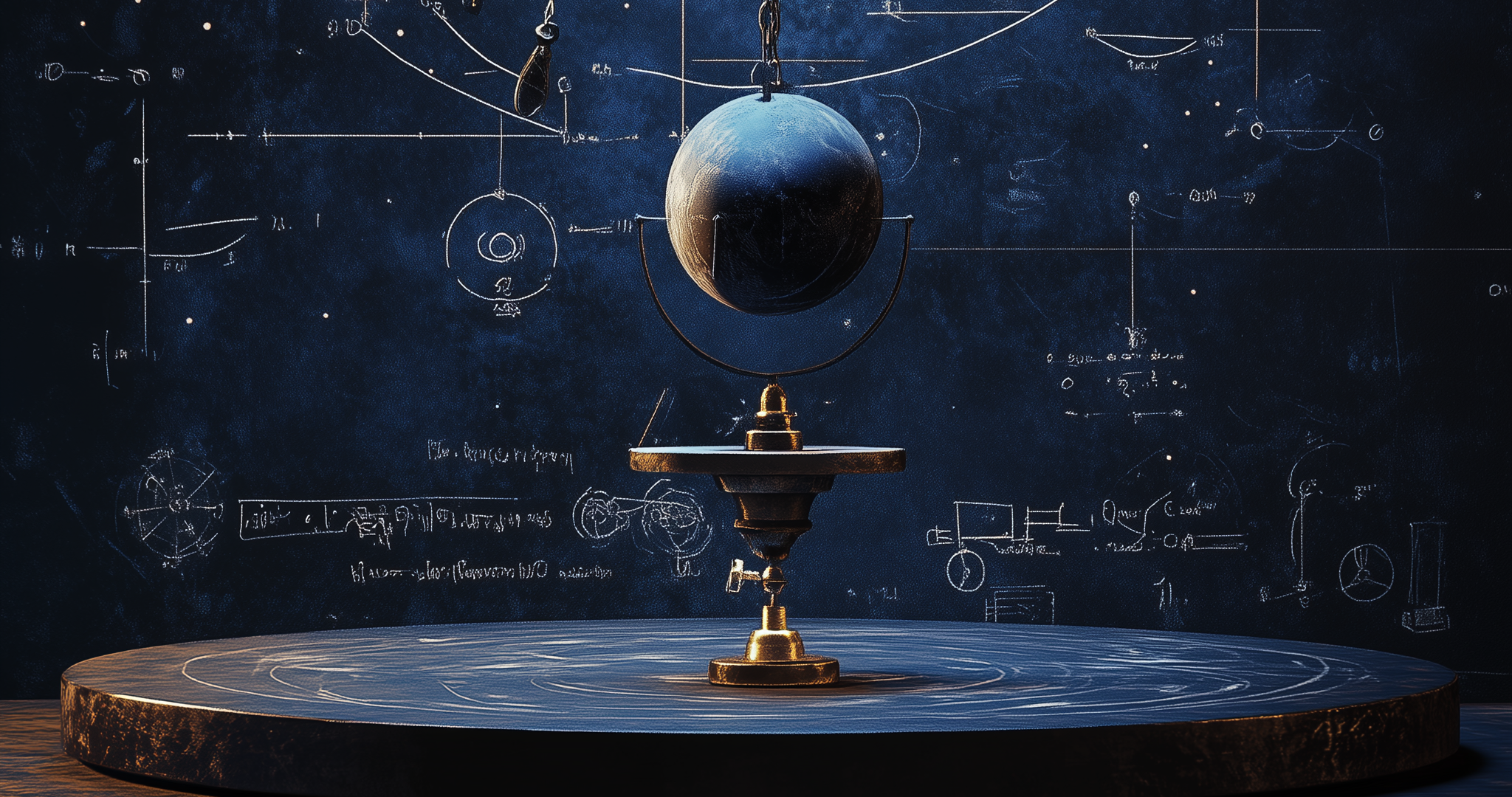In the previous post of this thread, I explored the nature of forces. In this post, I will go into more detail on how forces act on physical objects. The central law is Newton’s third law.
Action-Reaction Pairs (Newton’s Third Law)
Newton’s third law provides a profound insight into how forces actually arise: every force represents an interaction between two objects. The law is famously stated as:
“For every action, there is an equal and opposite reaction.”
This means forces always occur in pairs—an action force exerted by one object onto another, and a corresponding reaction force of equal magnitude but opposite direction exerted by the second object onto the first.
Crucially, these two forces never act on the same object. Instead, each force acts on a different object involved in the interaction, preventing them from simply “canceling out.”
Everyday Examples:
- Walking:
When you walk, your foot pushes backward against the ground (action), and the ground pushes your foot forward (reaction). It’s the reaction force from the ground that propels you forward. - Rocket Propulsion:
Rockets move by expelling hot exhaust gases backward (action), and these gases push the rocket forward (reaction). The expelled gases experience a backward force, while the rocket experiences the equal and opposite forward force. - Collisions:
When two cars collide, each exerts a force on the other. Although the forces are equal and opposite, each car experiences its own acceleration depending on its mass, leading to different outcomes for each vehicle.
Newton’s third law emphasizes the interconnected nature of forces: forces never exist in isolation but always represent mutual interactions. This insight is crucial for correctly analyzing motion and solving practical engineering problems.
Forces in Different Reference Frames
In an earlier post, we discussed inertial and non-inertial reference frames. Understanding reference frames is especially important when analyzing forces because the appearance of motion and forces can vary greatly depending on your perspective.
- Inertial frames (frames moving at constant velocity, with no acceleration) allow straightforward application of Newton’s laws. Forces observed in inertial frames reflect real physical interactions—gravitational, electromagnetic, or nuclear.
- Non-inertial frames (accelerating or rotating frames), however, introduce additional inertial forces (often called fictitious forces). These forces arise purely because the frame itself accelerates relative to inertial frames.
Real vs. Inertial Forces:
- Real forces originate from physical interactions between objects. Examples include gravitational attraction between planets or electromagnetic forces in charged particles.
- Inertial forces, in contrast, do not represent direct interactions but result solely from observing motion from an accelerating reference frame. Examples include centrifugal and Coriolis forces experienced on a rotating planet.
We often learn that inertial forces, such as the centrifugal force do not exist. I will passionately argue against this misconception. Inertial forces clearly exist but they depend on our choice of reference frame.
Example—Experiencing Inertial Forces:
When you’re in a car accelerating quickly, you feel pushed back into your seat. From the car’s reference frame (non-inertial), it seems a backward force is acting on you. Viewed from a resting reference frame, no backward force physically pushes you. Instead, this inertial force emerges because your body tries to maintain its inertia (its original state of motion), while the frame itself accelerates forward.
This distinction is crucial: only real forces originate from interactions, whereas inertial forces emerge from accelerating perspectives. Clearly differentiating between these two types helps us avoid confusion when analyzing complex scenarios, such as weather patterns, planetary motion, or engineering problems involving rotating machinery.
Deeper Insights from Studying Forces
While understanding forces is essential for solving practical problems, studying forces deeply can reveal powerful insights into the fundamental workings of nature. Beyond simply describing motion, forces connect physics to deeper philosophical and theoretical concepts.
Symmetry and Conservation Laws:
One profound insight comes from the relationship between forces and symmetries. In physics, symmetry refers to invariance under transformations—such as translations in space, rotations, or shifts in time. These symmetries correspond directly to conserved quantities, a connection formalized by Noether’s theorem (which we will explore more deeply in future posts).
For instance:
- Spatial translation symmetry (physics looks the same everywhere in space) corresponds to the conservation of momentum.
- Temporal symmetry (laws of physics don’t change with time) corresponds to the conservation of energy.
The Unification of Forces:
Historically, physicists discovered that seemingly separate forces could often be unified into deeper, more fundamental interactions. The electromagnetic force, for example, unified electricity and magnetism into a single framework in the 19th century. Modern physics continues this pursuit, seeking a unified understanding of gravity, electromagnetic, and nuclear forces—something referred to as the quest for a “Theory of Everything.”
Forces and Fields:
Another profound concept is the notion of fields. Rather than viewing forces as mysterious actions-at-a-distance, physicists introduced fields—physical entities that permeate space, mediating forces between objects. Electromagnetic and gravitational forces, for example, are now understood as interactions mediated by electric, magnetic, and gravitational fields, respectively. This field-based perspective becomes particularly essential in advanced topics such as electromagnetism, relativity, and quantum field theory.
Conclusion and Looking Forward
In these two posts on forces, we’ve explored not just how forces operate practically, but also their deep theoretical significance. Understanding action-reaction pairs clarified the inherent symmetry of interactions, while analyzing forces in different reference frames underscored the subtleties of motion. Most importantly, recognizing that studying forces leads us to deeper insights—such as symmetry principles, conservation laws, and unified theories—highlights classical mechanics’ role as the gateway to deeper physical theories.
In our next topic, we’ll examine these ideas in greater detail through Conservation Laws in Newtonian Mechanics, bridging from forces and interactions to deeper principles like energy, momentum, and angular momentum.








